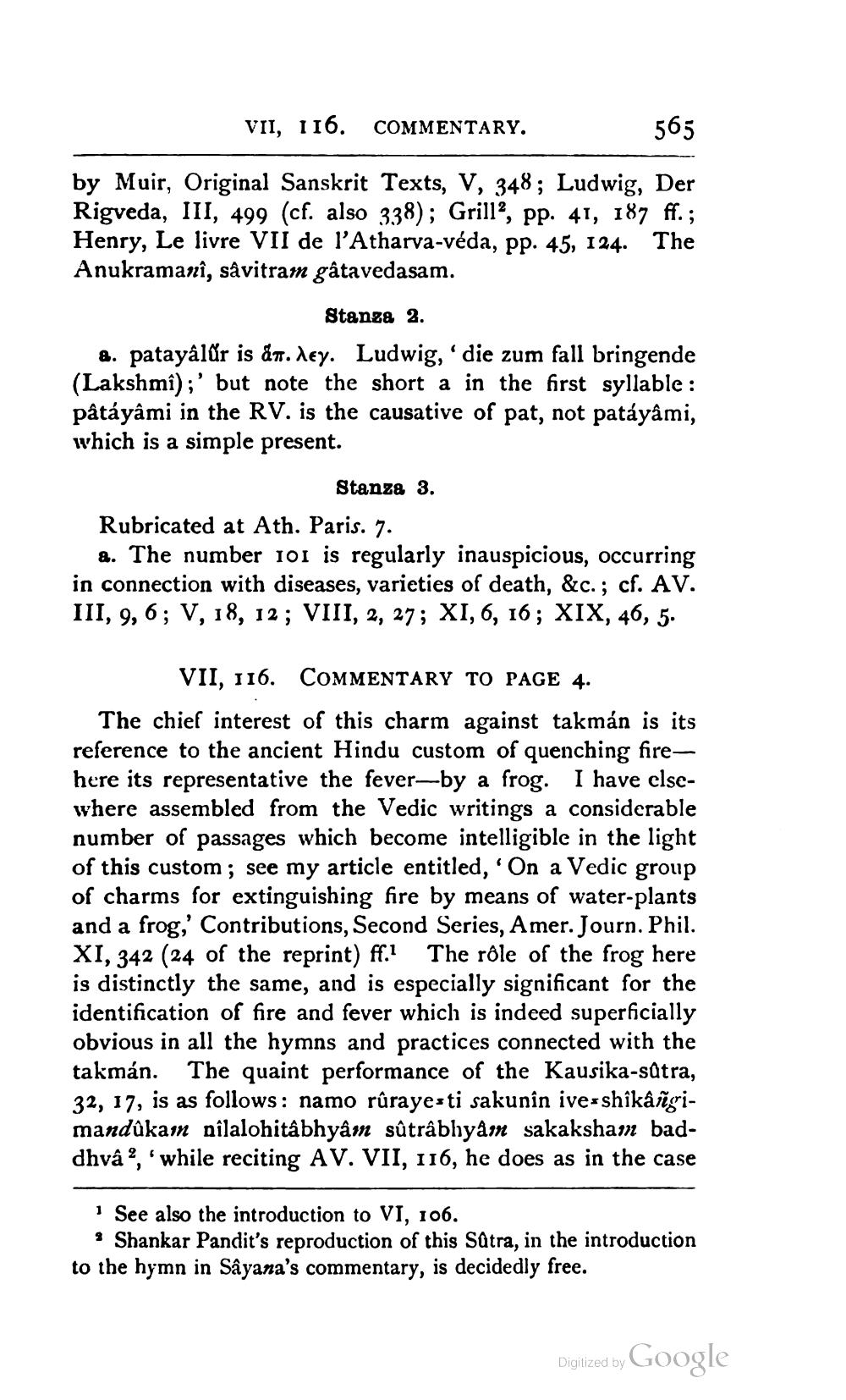________________
VII, 116. COMMENTARY.
565
by Muir, Original Sanskrit Texts, V, 348; Ludwig, Der Rigveda, III, 499 (cf. also 338); Grill2, pp. 41, 187 ff.; Henry, Le livre VII de l'Atharva-véda, pp. 45, 124. The Anukramanî, sâvitram gâtavedasam.
Stanza 2.
a. patayâlur is åπ. λeу. Ludwig, ' die zum fall bringende (Lakshmi);' but note the short a in the first syllable: pâtáyâmi in the RV. is the causative of pat, not patayâmi, which is a simple present.
Stanza 3.
Rubricated at Ath. Paris. 7.
a. The number 101 is regularly inauspicious, occurring in connection with diseases, varieties of death, &c.; cf. AV. III, 9, 6; V, 18, 12; VIII, 2, 27; XI, 6, 16; XIX, 46, 5.
VII, 116. COMMENTARY TO PAGE 4.
The chief interest of this charm against takmán is its reference to the ancient Hindu custom of quenching firehere its representative the fever-by a frog. I have clsewhere assembled from the Vedic writings a considerable number of passages which become intelligible in the light of this custom; see my article entitled, 'On a Vedic group of charms for extinguishing fire by means of water-plants and a frog,' Contributions, Second Series, Amer. Journ. Phil. XI, 342 (24 of the reprint) ff.1 The rôle of the frog here is distinctly the same, and is especially significant for the identification of fire and fever which is indeed superficially obvious in all the hymns and practices connected with the takmán. The quaint performance of the Kausika-sûtra, 32, 17, is as follows: namo rûraye-ti sakunîn ive-shîkâπgimandûkam nilalohitâbhyâm sûtrâbhyâm sakaksham baddhvâ, 'while reciting AV. VII, 116, he does as in the case
1 See also the introduction to VI, 106.
" Shankar Pandit's reproduction of this Sûtra, in the introduction to the hymn in Sâyana's commentary, is decidedly free.
Digitized by
Google




